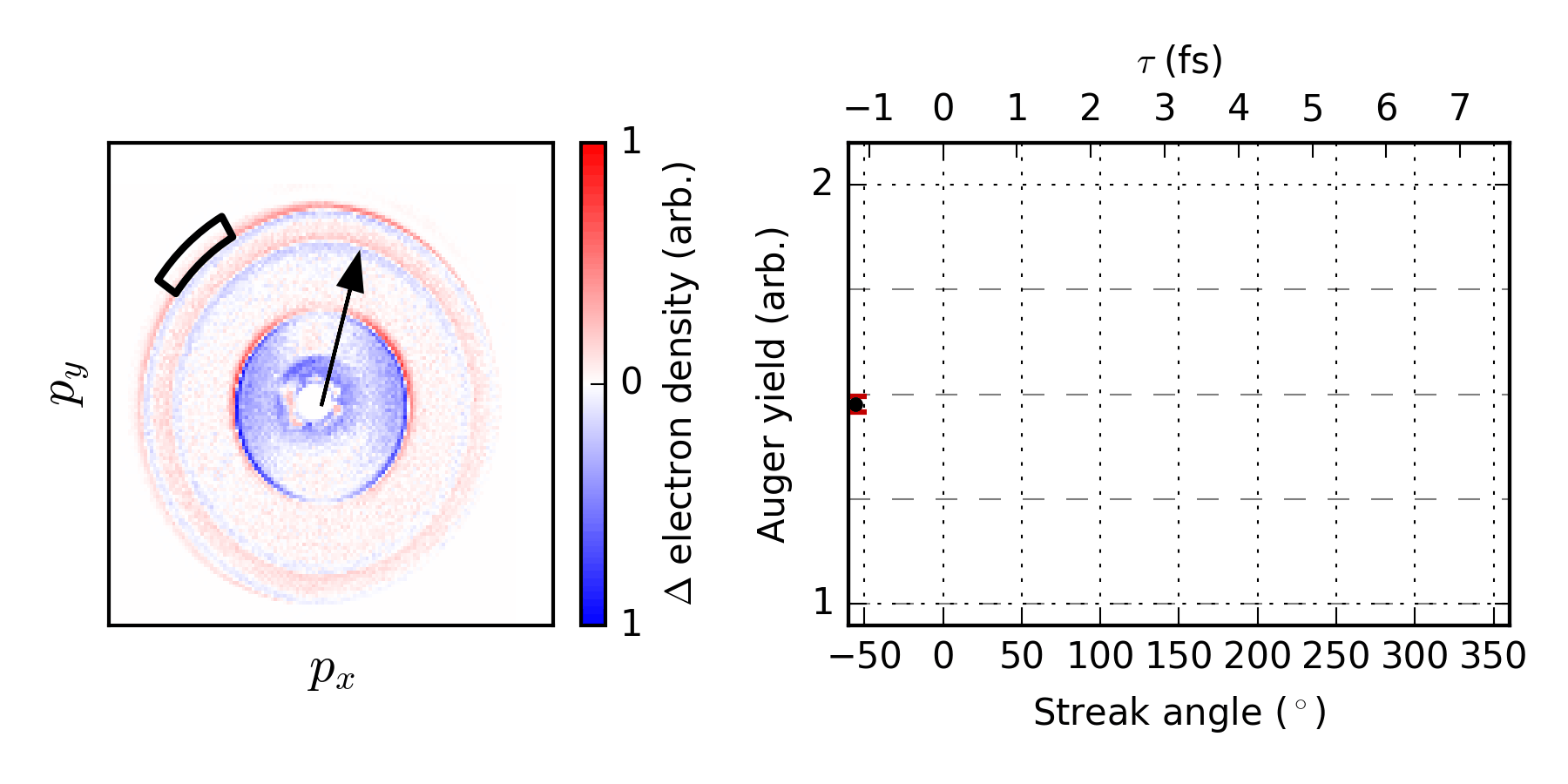AMO Research Highlights
Attosecond Pump/Probe with X-ray Free-Electron Lasers
This study reports the first pump/probe experiment with sub-fs resolution with an x-ray free-electron laser. This method opens new research directions by allowing XFEL users to directly measure the motion of electrons on its natural temporal scale. The delay is benchmarked using the angular streaking technique. We present a first observation of femtosecond electron dynamics associated with the post collision interaction.

Time-Resolving Auger Meitner Emission
Using the angular streaking technique, we have mapped the time-dependent electron emission current from a core-excited molecule. This demonstrates the ability of X-ray Free Electron Lasers to probe electronic coherence in small quantum systems.

Creating and probing coherent wavepackets of valence electrons
Scattering of powerful LCLS attosecond pulses (100 GW peak power, with several eV of coherent bandwidth) from nitric oxide (NO) molecules creates an electronic excitation (coherent wavepacket) near a single atom. Impulsive stimulated X-ray Raman scattering (ISXRS) involves a single impulsive interaction to excite a coherent superposition of electronic states. This is a powerful new approach to create and probe valence electron motions with high temporal and spatial resolution. Observing these electronic motions is crucial to understand the role of electronic coherence in chemical processes. Electronic population transfer via ISXRS using broad bandwidth (5.5 eV FWHM) attosecond X-ray pulses is demonstrated for the first time. The impulsive excitation is resonantly enhanced by the oxygen 1s→2π* resonance of (NO), and excited state neutral molecules are probed with a time-delayed UV laser pulse.

Tracking the Attosecond Time-Energy Structure of FEL Pulses
Angular streaking has been developed as a powerful method for characterizing attosecond X-rays from LCLS. In this approach, X-ray photoelectrons (e.g. from the neon core shell) are dressed with the electric field of a circularly polarized IR laser pulse. This encodes characteristic angle and frequency-dependent modulations of the resulting photoelectron spectrum, with sub-optical-cycle precision.

Site-specific interrogation of an ionic chiral fragment during photolysis using an X-ray free-electron laser
Chirality is a fundamental phenomenon that determines everybody’s all-day-life to a large extent. A versatile tool for investigating enantiomers in the gas phase in a controlled and theoretically well accessible way is circularly polarized light, since it possesses a handedness as well. Short-wavelength free-electron lasers with their ultrashort pulses at high intensities have originated new approaches for tracking molecular dynamics from the vista of specific sites. X-ray pump/X-ray probe schemes even allow to address individual atomic constituents with a ‘trigger’-event that preludes the subsequent molecular dynamics while being able to selectively probe the evolving structure with a time-delayed second X-ray pulse. We use a linearly polarized X-ray photon to trigger the photolysis of a prototypical chiral molecule, namely trifluoromethyloxirane (C3H3F3O), at the fluorine K-edge at around 700 eV. The created fluorine-containing fragments are then probed by a second, circularly polarized X-ray pulse of higher photon energy in order to investigate the chemically shifted inner-shell electrons of the ionic mother-fragment for their stereo-chemical sensitivity. We experimentally demonstrate and theoretically support how two-color X-ray pump X-ray probe experiments with polarization control enable XFELs as tools for chiral recognition.





